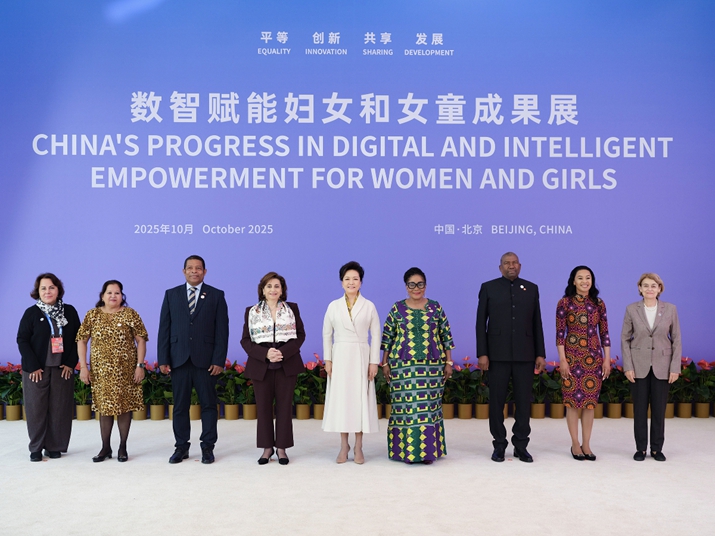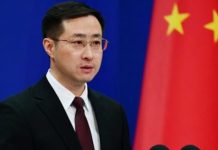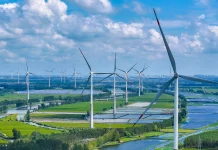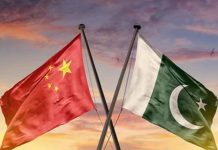
Thirty years ago, the Fourth World Conference on Women convened in Beijing, a pivotal moment in the global pursuit of gender equality. The landmark Beijing Declaration and Platform for Action, unanimously adopted at the conference by 189 countries and regions, stands as a cornerstone of women’s empowerment and remains the key global policy document on gender equality. It outlines strategic objectives and actions for the advancement of women and the achievement of global gender equality across 12 critical areas of concern, including poverty, education, health, and violence against women.
To commemorate this anniversary, the Global Leaders’ Meeting on Women was held in Beijing from October 13 to 14. Drawing over 800 distinguished guests from more than 110 countries and international organizations, including 20 heads of state and government, parliamentary leaders, deputy-prime-minister-level officials, and heads of international organizations, the meeting served as a forum for critical discussions and future planning. Under the theme One Shared Future: New and Accelerated Process for Women’s All-Round Development, participants reaffirmed their commitment to progress.
In his address at the opening ceremony, Chinese President Xi Jinping emphasized, “Women play an important role in creating, promoting and carrying forward human civilization. And the international community has a shared responsibility to advance the cause of women.”
He further stated, “Over the past 30 years, guided by the spirit of the Beijing World Conference on Women, the cause of women has been thriving around the world, adding brilliant splendor to the progress of human civilization.”

Despite this progress, complex challenges continue to impede the cause of women’s rights in many areas. “Globally, over 600 million women and girls are still mired in war and conflict, and around 10 percent of women and girls are trapped in
extreme poverty. At the same time, deep-rooted problems such as violence and discrimination still persist, the gender digital divide is widening, and equality between men and women remains a lofty yet arduous task,” Xi stated.
To address these challenges, Xi put forth four proposals: fostering an enabling environment for women’s growth and development, cultivating powerful momentum for the high-quality development of women’s causes, developing governance frameworks to protect women’s rights and interests and writing a new chapter in promoting global cooperation on women.
Nahla Haidar El Addal, head of the UN Committee on the Elimination of Discrimination Against Women, who attended the meeting, praised Xi’s advocacy of supporting women to shoulder more responsibility, engage more deeply in global governance and share more in the fruits of governance.
She told China Daily the key challenge in the current global governance system lies in the lack of coordinated, unified, clear and well-defined rules and a procedural framework, which makes it difficult for countries to form synergy in their actions. She therefore stressed that building international consensus and improving governance rules are of critical importance.
“As the world faces economic uncertainty, climate crises, conflicts and deepening inequality, recommitting to gender equality is critical for building a just and sustainable future,” Irina Bokova, former UNESCO Director General, told Xinhua News Agency.

An attendee of the Global Leaders’ Meeting on Women dances with Chinese dancers at a social service center for women and children in Beijing on October 14 (XINHUA)
Landmark progress
Xi said China has integrated women’s development into its efforts to advance Chinese modernization and has achieved historic progress in the cause.
“We have won the largest battle against poverty in human history, and thereby brought moderate prosperity to 690 million women, achieving ahead of schedule the poverty reduction goal of the UN’s 2030 Agenda for Sustainable Development,” he said.
China also ranks among leading upper-middle-income countries in core indicators for maternal and child health, Xi said, adding that the maternal mortality rate in the country has dropped by nearly 80 percent since 1995.
At a press conference on September 19, Huang Xiaowei, deputy head of the National Working Committee on Children and Women of the State Council, the highest state administrative organ, underscored that China has attached unprecedented importance to the development of women’s rights and provided strong support for the cause, and the sense of fulfillment, happiness and security felt by women in China has reached an unprecedented level.
The white paper titled China’s Achievements in Women’s Well-Rounded Development in the New Era, unveiled during the press conference, outlines China’s robust legal architecture. This framework, anchored in the Constitution and centered on the Law on the Protection of Women’s Rights and Interests, comprises more than 100 laws and regulations. The document also attests to China’s sustained efforts to combat illegal infringements on the personal rights of women and girls.
The white paper also highlights that a rough balance between male and female students has been achieved in higher education.
In 2024, female students accounted for 50.76 percent of the total number of students in higher education institutions—14.15 percentage points higher than in 1995. Women made up 50.01 percent of all graduate students, an increase of 22.43 percentage points from 1995.
Moreover, the white paper highlights notable improvements in Chinese women’s health, attributed to the nation’s focus on women and children in its health initiatives. By strengthening institutional frameworks and optimizing resource allocation, China offers full life-cycle health services for women, contributing to a rise in women’s life expectancy to 80.9 years as of 2020.
Feng Ling, Vice President of the All-China Women’s Federation, declared at the press conference on September 19 that “she power” is emerging as a dynamic force within China’s digital economy. Currently, women constitute over half of all Internet entrepreneurs, a third of the digital trade and livestreaming workforces, and in 2024 alone, over 14,000 women were certified as AI trainers, demonstrating their increasing influence in cutting-edge sectors.
Global engagement and responsibility
In addition to making domestic progress, China is also fulfilling its responsibility as a major country by providing leadership and support for the global advancement of women, primarily by focusing on the most pressing livelihood needs of women in developing countries and providing pathways to development.
China’s global introduction of Juncao, a hybrid grass variety that can be used as a substrate to grow valuable culinary and medicinal mushrooms, has helped women in over 100 countries secure livelihoods. Lin Dongmei, daughter of Lin Zhanxi, the developer of Juncao technology and a professor at Fujian Agriculture and Forestry University, has conducted numerous hands-on training sessions in Africa and Oceania. Lin told People’s Daily newspaper, “During my involvement in aid and development projects, I have encountered many women, including women with disabilities, who, empowered by Juncao technology, have transformed from being unemployed into managers, entrepreneurs and technical specialists.”
The African Mothers’ New Farm project, launched in 2024 by the Hunan Provincial Women’s Federation, is currently underway in Africa. This initiative increases production capacity for cassava, rice, traditional Chinese medicinal materials, natural rubber and other crops, enhancing African women’s skills and independence, fostering prosperous farming communities.
This project has helped 1,150 African women secure employment and improved the living conditions of 950 families.
As a nation committed to peace, China advocates integrating a gender perspective into all peace processes, prioritizes women’s needs in international humanitarian aid and supports women’s active participation in responding to global crises.
Gao Yan, a member of the medical detachment of the 23rd Chinese peacekeeping contingent to Lebanon, which provided free clinics for local women from 2024 to 2025, told China Women’s News newspaper, “Peace is not just the cessation of gunfire, but the rebuilding of understanding and trust between people.” This commitment to building trust is reflected in China’s deployment of over 1,200 female peacekeepers and more than 100 female police officers to UN missions. As noted in the white paper, these personnel have participated in medical support, liaison and coordination, mine clearance, patrols and observation, and efforts to advance gender equality and protect women. Their empathy and delicate communication skills have enhanced local trust in peacekeeping operations; many have even been affectionately nicknamed “Chinese mothers” by local children.
Achieving gender equality and the full development of women are fundamental requirements for humanity’s sustainable development. However, with only five years remaining to meet the UN’s 2030 Agenda for Sustainable Development, promoting gender equality and the full development of women remains a challenging and protracted endeavor.
Global issues such as regional conflicts, climate change, the digital divide and wealth disparity are widening the gap between men and women. The progress made in women’s development faces the risk of stagnation or even regression, urgently requiring the international community to form a synergy and work together to respond.
Xi announced a series of impactful measures at the opening ceremony of the Global Leaders’ Meeting on Women, demonstrating China’s commitment to advancing the women’s cause globally.
Over the next five years, China will donate an additional $10 million to UN Women, Xi said. It will also earmark a quota of $100 million in its Global Development and South-South Cooperation Fund for cooperation with international organizations on projects to promote women’s and girls’ development, he added.
According to Xi, China will support 1,000 “small and beautiful” livelihood projects with women and girls as the priority beneficiaries, and invite 50,000 women to China for exchange and training programs. It will also establish a Global Center for Women’s Capacity Building, which is aimed at carrying out cooperation with related countries and international organizations to train more female talent. –The Daily Mail-Beijing Review news exchange item




